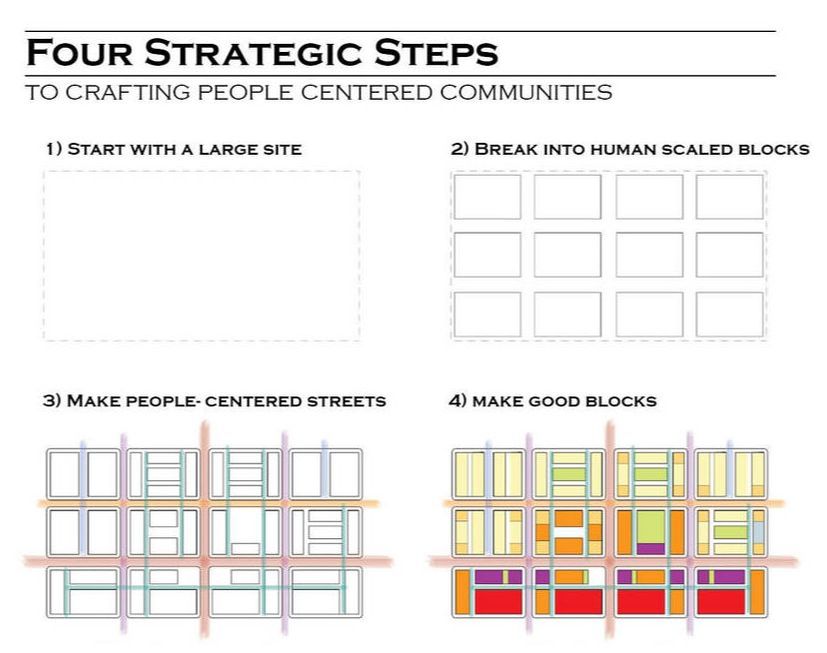COMMUNITY DESIGN > PLACE-CRAFT: PEOPLE CENTERED COMMUNITY DESIGN
As we plan for a healthy economy, more people and changing climate, we need more people-centered communities that make better use of existing resources. For the last 60 years, we have collectively planned and designed our built environment without prioritizing the human experience, mobility, connectivity, public health, and joy.
Place Crafting is a community design framework to transform underutilized parcels of land into new people-centered neighborhoods and communities. The kit’s core components: building types, block types, streets and paths are all designed to prioritize and integrate human experience, movement, health, activity. The components can be configured in endless combinations to create delightful, livable, resource efficient, environmentally adaptive community design. Our future communities should nourish the mind, body and spirit of as many people as possible.
Place Crafting is a community design framework to transform underutilized parcels of land into new people-centered neighborhoods and communities. The kit’s core components: building types, block types, streets and paths are all designed to prioritize and integrate human experience, movement, health, activity. The components can be configured in endless combinations to create delightful, livable, resource efficient, environmentally adaptive community design. Our future communities should nourish the mind, body and spirit of as many people as possible.
1) Start with A Large Site
Large single use parcels of land, like shopping malls and office parks, create a modern landscape that forces car travel from one activity to the next. As cities and regions grow, single land uses are unsustainable, environmentally, economically, socially. There is an opportunity to layer new uses at these locations to create vibrant, walkable districts or neighborhoods that offer more people the chance to live, work, learn, play, shop, dine - all in one delightful place.
2) Break Into Human Scaled Blocks
Large single use parcels of land are scaled to be accessed solely by car travel. Consequently, they are difficult to navigate by foot or active transport. Pre-car communities have a fine grained pattern that maximized human mobility and vitality. Breaking large parcels into smaller, more human scaled blocks creates the structure that makes it easier for people to understand a place, get around more easily, and have fun.
3) Make People-Centered Streets
Streets are conduits for people to get from one place to another, as well as active social spaces. Our streets currently use cars as a proxy for people, yet cars do not have to be the primary street user. Buses, cyclists, and pedestrians take up far less people on our streets than private autos. To move more people along our streets, we should consider giving people a safe, convenient, comfortable experience, to walk, cycle, or bus. Active human transport is also more social, increasing contact between a wider range of people and can weave a stronger social fabric and combat loneliness.
4) Make Good Blocks
To complement people-centered streets, we need good blocks. Good blocks are filled with people. Good blocks offer many activities. And good blocks promote fun! The more things one can do on a block, the more likely they will stay, attract other people, and nurture a community socially and economically. To build good blocks we need a mix of different uses (live + work + dine + shop + play), and to make active public uses (corners, alleys, arcades and gardens).
